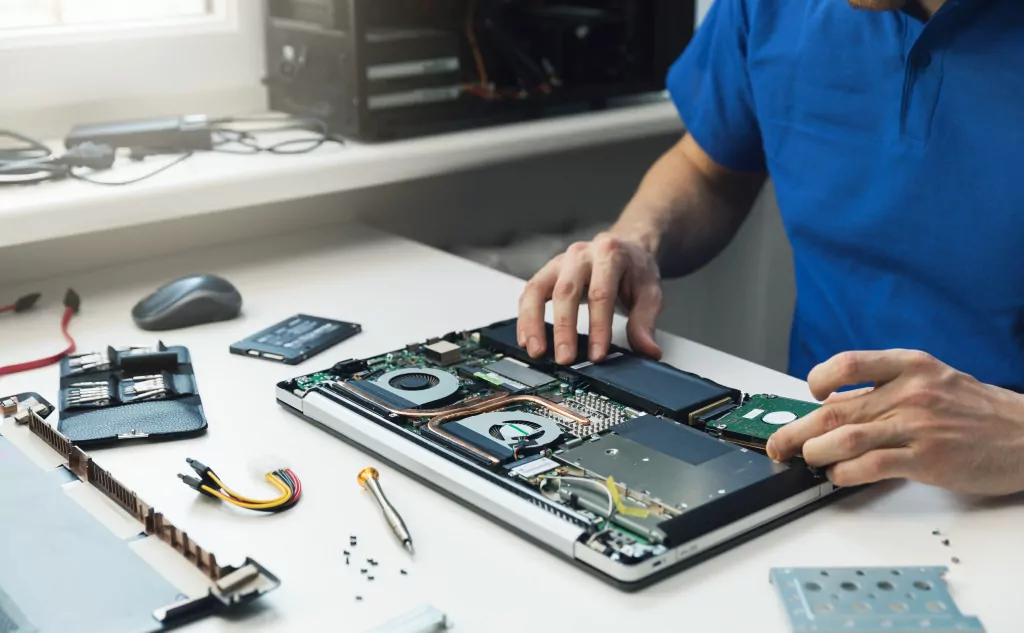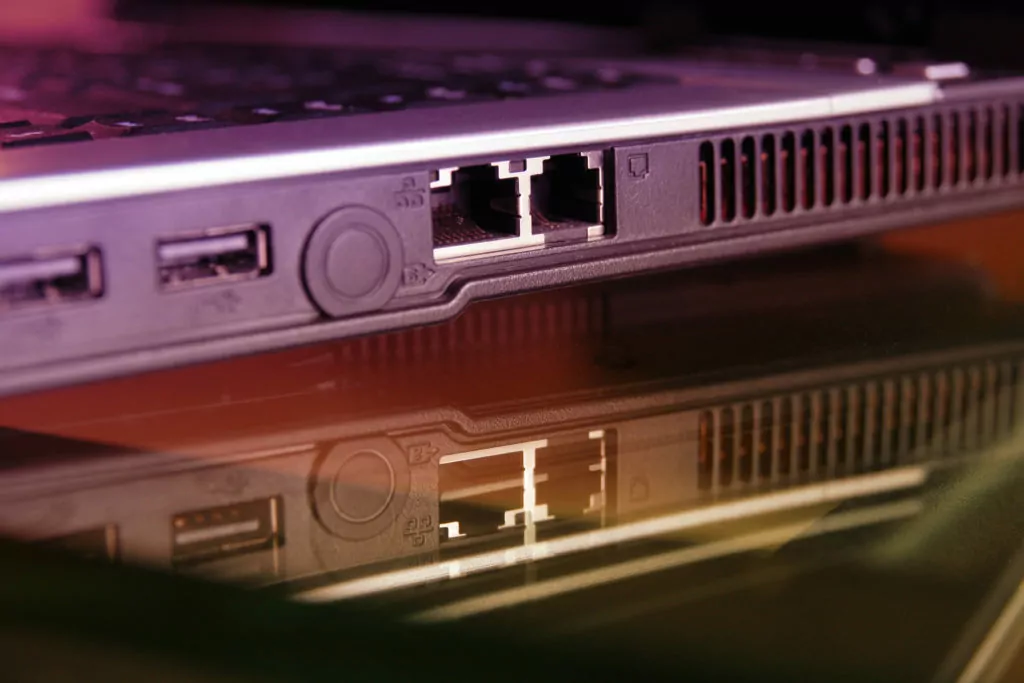Here’s everything about storing your laptop vertically being bad:
It is perfectly fine to store a laptop vertically.
If you want to be exceptionally proactive, store the laptop so that the vent doesn’t face the ceiling to prevent as much dust from collecting.
Additionally, ensure that the laptop is stored securely so that it cannot fall over and take damage from a physical shock.
So if you want to learn all about the safety of storing your laptop vertically, then you’re in the right place.
Let’s jump right in!
- MacBook Clamshell Mode Constantly: Safe?
- Dropping Phone: Affects Phone’s Performance?
- Laptop Brands With Most Durable Hinges: Which?
- Leaving Phone Flashlight On: Bad?
- Shower Steam: Damages Phone?
- Dropping Your Phone: What Happens?
- Microwaving Cell Phones: What Happens?

What Happens When You Store a Laptop Vertically?

What does the laptop go through when you store it vertically?
Honestly, nothing happens at all.
A laptop in storage isn’t really doing anything, so the orientation doesn’t matter.
The way laptops are designed, everything is secured in place.
The device doesn’t care if it’s vertical, horizontal, or oriented in any other direction.
The components sit still regardless, and the laptop simply waits to be used again.
The primary concern with storing a laptop is battery drain.
Eventually, the battery will drain, and if it remains drained for too long, it might stop working.
But, that has absolutely nothing to do with the orientation of the laptop in storage.
Are There Any Major Risks Storing a Laptop Vertically?

If you store your laptop vertically, there is really only one thing to consider: falling.
This is all about stability and balance.
A laptop that is lying horizontally is going to be low to the surface holding it.
It’s unlikely to fall unless a big portion of the laptop is hanging off of an edge.
Just think of a table as an example.
If your laptop is sitting on a table horizontally, you’re not worried about it falling.
But, if you stand the laptop on its edge on the same table, it can fall over.
Obviously, that’s bad for the laptop.
It might be built to withstand shocks, but that doesn’t mean you want to test the laptop’s durability if you don’t have to.
So, vertical storage is fine as long as it is stable.
There are racks that are designed to store laptops vertically.
They can also be propped between other items in storage to stabilize everything and minimize any risk of a fall.
As long as you accept the risk of falling, vertical storage is fine.
Can You Use the Laptop While It Is Vertical?

Yes. You can definitely use the laptop while it is vertical, but there are a few things to consider before you try.
First, you need to think about the laptop’s vent.
Laptops create heat, and they need to expel that heat.
That’s why they typically have a heat exhaust vent.
If the laptop has a fan, you can feel heat blow out of the vent while the laptop is in use.
As for orienting the laptop while you use it.
The key is to ensure that the vent is not covered.
As long as you aren’t putting the vent against something that would block airflow, it doesn’t matter that the laptop is vertical.
The other issue has to do with using the laptop.
It doesn’t exactly make sense to put a laptop on its edge to then try to use the built-in screen and keyboard.
That’s awkward at best.
Instead, this would work if you’re attaching the laptop to an external monitor, mouse, and keyboard.
You can adjust the settings so that the laptop will work while the shell is closed.
In that case, vertical storage might make sense with your configuration, and it’s fine.
As long as the vent is clear, there’s nothing to worry about.
Like with storage, though, you do want to think about stability.
Any laptop that is in use while vertical should be secured. You don’t want it to take a fall, especially while it is in use.
Where Does the Idea That Storing a Laptop Vertically Is Bad Come From? (2 Things)

Why is there an idea that storing a laptop vertically is a bad idea?
There are a few misconceptions and outdated concepts that keep this myth alive.
#1 Moving Parts of a Laptop

Laptops have moving parts.
Most commonly, fans and hard drives can rotate, providing motion inside the laptop.
The idea that vertical storage might be bad comes from gravity.
If gravity pulls on these moving parts for long periods of time, it might lead to warping or loosening of the parts.
If that happens, you can end up with fans and hard drives that grind and rotate in the wrong ways.
That’s generally bad.
There are a few reasons why this isn’t as concerning as it sounds.
For starters, solid-state hard drives are standard in laptops these days.
While you might be able to find old-fashioned platter drives in a new laptop, it’s uncommon.
And to clarify, a platter drive is a hard drive where a part spins in circles.
You can hear these drives hum while they operate.
Solid-state drives have no moving parts.
They use electric currents to read and write information to the drive.
Because they have no moving parts, there is no concern that storing them vertically will cause issues.
On top of that, laptops are made with a high degree of precision.
The moving parts are secured very well, and storing the laptop vertically simply isn’t going to cause a problem.
This may have been an issue with very early laptops that had less precision in machining and mounts, but even that is speculative.
A modern laptop’s fans are secured in such a way that vertical storage is no concern.
Technically speaking, storing a laptop vertically could eventually lead to some kind of warping, but this would take decades.
The laptop’s lifespan is too short for it to matter.
#2 Vents of a Laptop

The other issue is venting, and this one has a little bit of merit.
If you store a laptop vertically, you can point any edge of the laptop directly up.
This means that you can point the vent towards the ceiling, and this is a potential issue.
The problem is if a lot of dust collects in the vent.
Dust clogs up the airflow, and it prevents the vent from adequately cooling the device.
So, you don’t want to store a laptop this way in a dusty environment.
But, there are two points to add to this idea.
You don’t want to store a laptop in a dusty environment regardless of its orientation.
Dust is bad for laptops.
Additionally, if dust does get into your laptop vent, you can clean it with compressed air.
No matter what you do, some dust is going to build up over time, so clear the vent as a part of routine maintenance, and none of this will matter.

